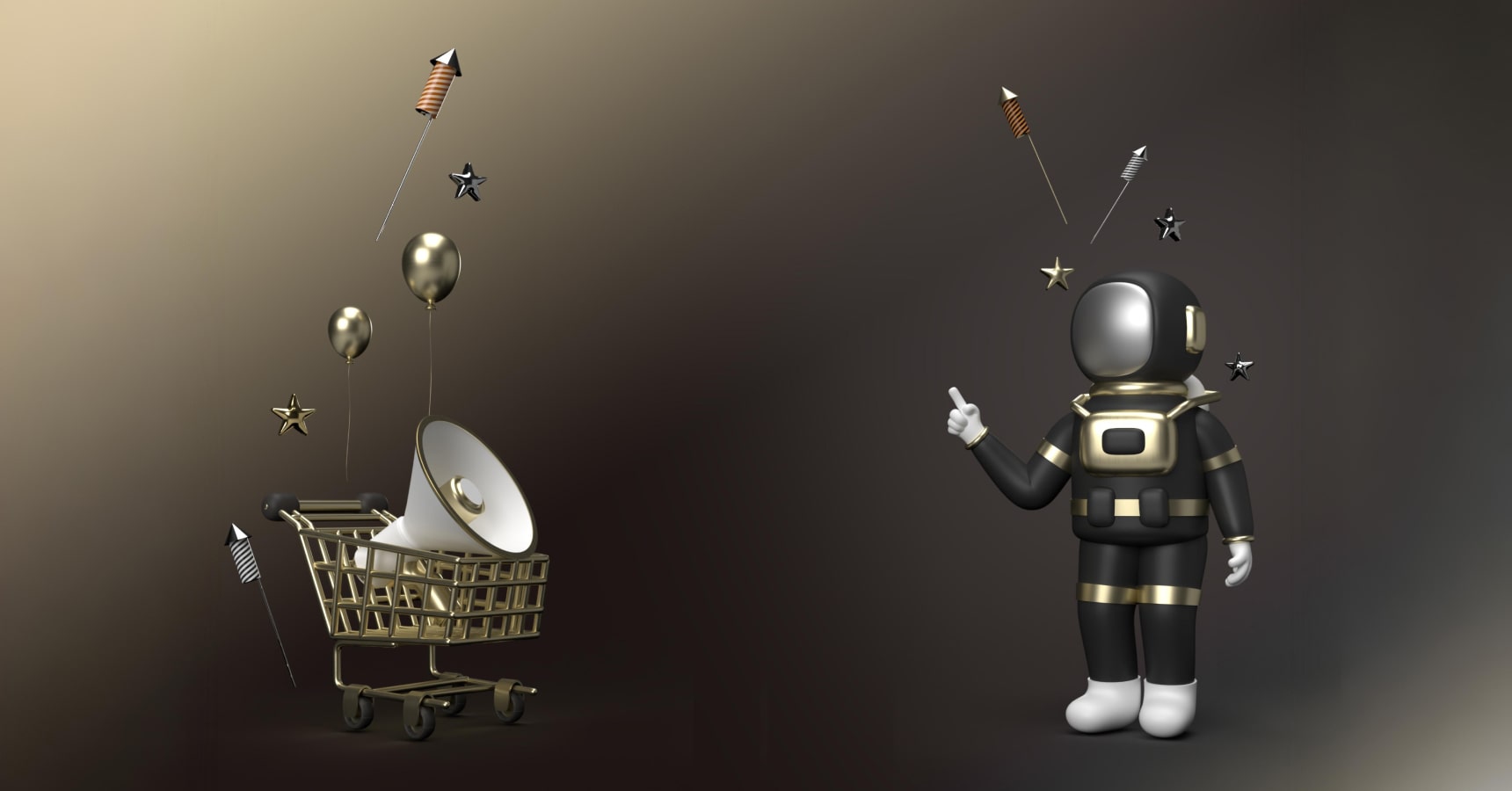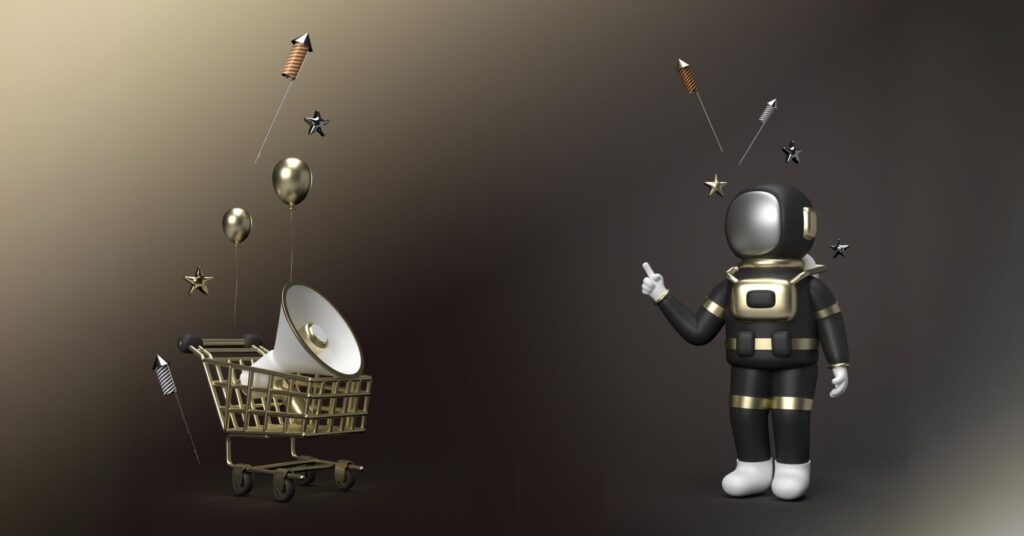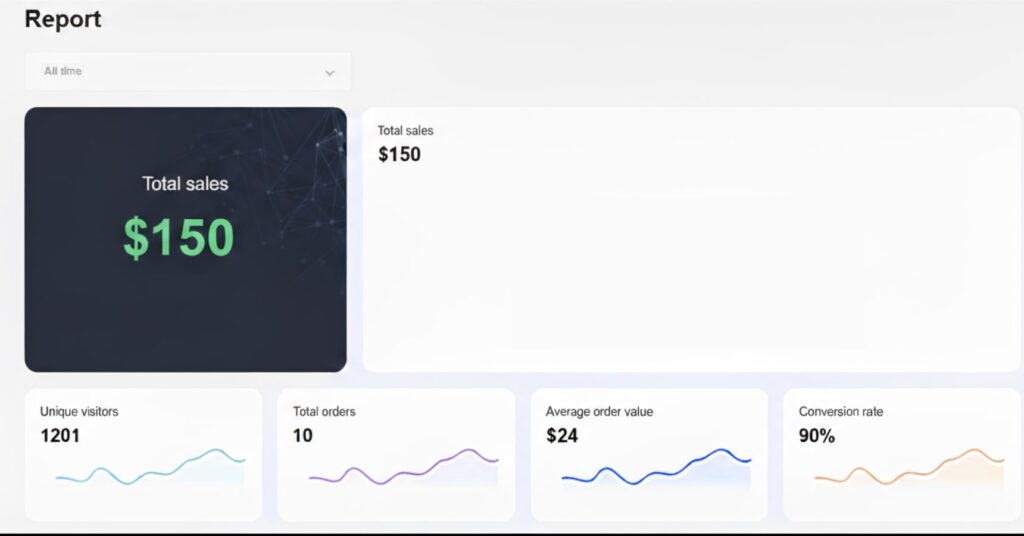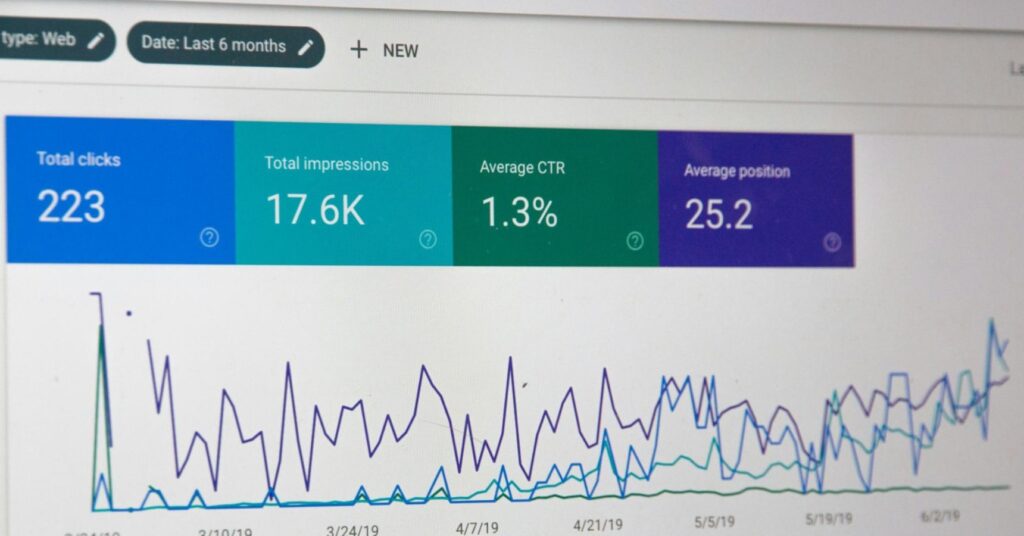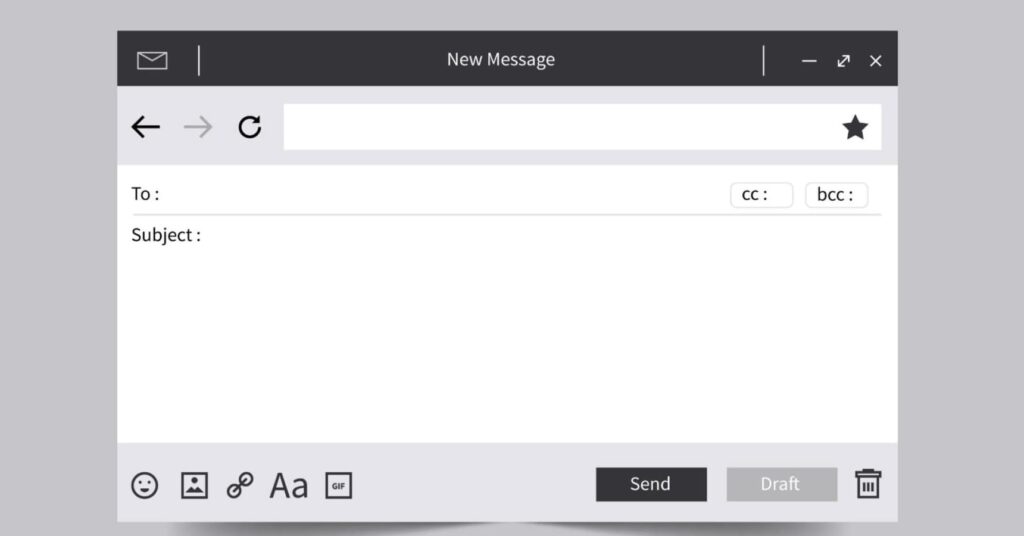Every few years, someone declares dropshipping dead. They said it in 2018. They said it in 2020. They’re saying it now. Meanwhile, thousands of entrepreneurs are quietly building sustainable eCommerce businesses using this exact model, wondering what all the noise is about.
Let’s cut through the drama and look at what’s actually happening in the dropshipping space as we move through 2025 and into 2026. Spoiler alert: the model isn’t just alive – it’s evolving into something smarter, more sophisticated, and more accessible than ever before.
What Changed ( And What Didn’t)
 Here’s the truth nobody wants to admit: dropshipping never stopped working. What stopped working were the shortcuts, the lazy marketing, and the “get rich quick” promises that gave the entire model a questionable reputation.
Here’s the truth nobody wants to admit: dropshipping never stopped working. What stopped working were the shortcuts, the lazy marketing, and the “get rich quick” promises that gave the entire model a questionable reputation.
The fundamentals remain solid. You connect customers with products they want without warehousing inventory or managing complex logistics. That’s not a fad — that’s efficiency. What’s changed is the execution standard. The market got smarter, and successful dropshippers got smarter with it.
Think about it this way: email marketing didn’t die when spam filters got better. Good email marketers just adapted and thrived. Dropshipping follows the same trajectory. The noise filtered out, and the real businesses emerged stronger.
Why Dropshipping Makes More Sense Now Than Ever
Technology Caught Up With the Vision
Back when dropshipping first gained popularity, the technology was clunky. Order management systems barely talked to supplier databases. Customer service felt like detective work. Shipping times were anybody’s guess.
 Fast forward to 2025, and the infrastructure supporting dropshipping has become remarkably sophisticated. Platforms like Sellvia have built ecosystems where everything actually works together. Real-time inventory updates, automated order processing, integrated customer communication — the technical friction that used to plague dropshippers has largely disappeared.
Fast forward to 2025, and the infrastructure supporting dropshipping has become remarkably sophisticated. Platforms like Sellvia have built ecosystems where everything actually works together. Real-time inventory updates, automated order processing, integrated customer communication — the technical friction that used to plague dropshippers has largely disappeared.
This matters more than people realize. When you’re not spending hours manually processing orders or tracking down shipment information, you can focus on what actually grows businesses: understanding your customers and refining your marketing.
The Economics Still Beat Traditional Retail
Let’s talk money, because that’s ultimately what matters. Opening a traditional retail store requires massive capital. Rent, inventory, staff, insurance, utilities — you’re looking at five or six figures before you sell your first item. Even traditional eCommerce with warehoused inventory requires significant upfront investment.
 Dropshipping inverts this model entirely. Your capital goes into marketing and building your brand, not sitting in boxes on warehouse shelves. You test products without buying bulk inventory. You can pivot quickly when something isn’t working. The financial flexibility is unmatched.
Dropshipping inverts this model entirely. Your capital goes into marketing and building your brand, not sitting in boxes on warehouse shelves. You test products without buying bulk inventory. You can pivot quickly when something isn’t working. The financial flexibility is unmatched.
At Offiro, we see this advantage play out constantly with our verified store listings. Stores generating $30,000+ annually often operate with minimal overhead because the dropshipping model keeps costs variable rather than fixed.
Market Saturation Is a Myth
“Isn’t dropshipping oversaturated?” This question comes up constantly, and it misunderstands how markets actually work.
 Yes, there are many dropshippers. There are also millions of eCommerce customers, and that number grows daily. The question isn’t whether there’s room — it’s whether you can connect with your specific audience in a meaningful way.
Yes, there are many dropshippers. There are also millions of eCommerce customers, and that number grows daily. The question isn’t whether there’s room — it’s whether you can connect with your specific audience in a meaningful way.
Saturation happens in commoditized markets where everyone sells identical products with identical messaging. The successful dropshippers of 2025 understand this and build accordingly. They develop brand identities, create value through content and customer experience, and focus on specific niches rather than trying to be everything to everyone.
What Modern Dropshipping Actually Looks Like
Curated Selection Over Endless Catalogs
 The old playbook involved stuffing your store with thousands of random products and hoping something stuck. The new approach is more editorial. Think less “online flea market” and more “thoughtfully curated boutique.”
The old playbook involved stuffing your store with thousands of random products and hoping something stuck. The new approach is more editorial. Think less “online flea market” and more “thoughtfully curated boutique.”
Modern dropshippers build stores around themes, lifestyles, or specific problem-solving. They might focus on eco-conscious home goods, innovative pet products, or gear for specific hobbies. The product selection tells a story and serves a defined audience.
This shift makes dropshipping stores feel less like middlemen and more like trusted recommendations from someone who understands what you need.
Quality Control Became Non-Negotiable
 Here’s where many dropshippers used to fail: they’d source cheap products from unreliable suppliers, ship them slowly, and wonder why customers complained. That approach doesn’t fly anymore, and honestly, it never should have.
Here’s where many dropshippers used to fail: they’d source cheap products from unreliable suppliers, ship them slowly, and wonder why customers complained. That approach doesn’t fly anymore, and honestly, it never should have.
The dropshippers succeeding now work with suppliers who maintain quality standards and reasonable shipping times. They test products themselves before listing them. They set realistic expectations with customers and then exceed them when possible.
Offiro’s established stores come with vetted supplier relationships already in place, which means you’re inheriting partnerships that actually work rather than starting from scratch.
Customer Experience Drives Everything
 Product margins matter, but customer lifetime value matters more. A dropshipping store that delivers excellent service and builds genuine relationships can charge premium prices and generate steady repeat business.
Product margins matter, but customer lifetime value matters more. A dropshipping store that delivers excellent service and builds genuine relationships can charge premium prices and generate steady repeat business.
This means responsive communication, clear policies, and going beyond the bare minimum. The stores that treat dropshipping as a real business rather than a passive income experiment are the ones building sustainable revenue.
The Competitive Advantages That Actually Matter
Speed to Market
 Want to test a new product category? With dropshipping, you can have items listed and marketed within days. Traditional retail requires months of planning, bulk ordering, and hoping you guessed right about demand.
Want to test a new product category? With dropshipping, you can have items listed and marketed within days. Traditional retail requires months of planning, bulk ordering, and hoping you guessed right about demand.
This agility lets you respond to trends, test hypotheses quickly, and iterate based on real customer feedback rather than assumptions. In fast-moving consumer markets, this responsiveness is worth more than most people realize.
Geographic Freedom
 Your dropshipping business doesn’t care where you live. Manage it from your apartment, a coffee shop, or while traveling. As long as you have internet access and maintain your operational standards, location becomes irrelevant.
Your dropshipping business doesn’t care where you live. Manage it from your apartment, a coffee shop, or while traveling. As long as you have internet access and maintain your operational standards, location becomes irrelevant.
This flexibility appeals to a generation that values experiences and mobility. You’re not tied to a physical location or trapped by lease commitments. The business adapts to your life rather than demanding your life adapt to it.
Scalability Without Complexity
 Growing a traditional retail business means more inventory, more warehouse space, more staff to manage physical operations. Growth creates logistical complexity at every turn.
Growing a traditional retail business means more inventory, more warehouse space, more staff to manage physical operations. Growth creates logistical complexity at every turn.
Dropshipping scales differently. Going from 10 orders daily to 100 doesn’t require proportionally more infrastructure. Your supplier handles fulfillment whether you ship 50 items or 500. This means your growth is primarily limited by your marketing effectiveness and customer service capacity — both more manageable than logistics at scale.
What the Critics Get Wrong
“ The Profit Margins Are Too Small”
This criticism usually comes from people comparing dropshipping to bulk wholesale margins. Sure, buying 1,000 units at deep wholesale prices gives better per-unit margins. It also requires massive capital, storage costs, and the risk of being stuck with unsold inventory.
 Dropshipping margins are lower per item but come with virtually no overhead or inventory risk. When you factor in the total financial picture — including what you’re not spending on warehousing, bulk inventory, and potential deadstock — the economics work quite well.
Dropshipping margins are lower per item but come with virtually no overhead or inventory risk. When you factor in the total financial picture — including what you’re not spending on warehousing, bulk inventory, and potential deadstock — the economics work quite well.
Plus, successful dropshippers build margin through brand value and customer experience, not just product costs. People pay more for a great buying experience and a brand they trust.
“Shipping Times Kill the Business”
This was valid criticism five years ago. In 2025, it’s largely outdated. Many dropshipping suppliers now offer domestic fulfillment with 2-5 day delivery times. The 30-day shipping from overseas that gave dropshipping a bad reputation isn’t the standard anymore.
 Customers care about clear expectations more than absolute speed. If you promise 7-day delivery and deliver in 5, you’re a hero. If you promise 2-day delivery and take 4, you’ve created disappointment. Manage expectations properly, and shipping times become a non-issue.
Customers care about clear expectations more than absolute speed. If you promise 7-day delivery and deliver in 5, you’re a hero. If you promise 2-day delivery and take 4, you’ve created disappointment. Manage expectations properly, and shipping times become a non-issue.
“It’s Too Competitive Now”
Competition exists everywhere in eCommerce. The question is whether you can differentiate and serve your audience well. Dropshipping isn’t special in facing competition – every business model does.
The advantage dropshipping offers is low-cost testing and iteration. You can try different niches, adjust your approach, and find your fit without betting the farm each time. This experimental freedom in a competitive landscape is actually a huge advantage.
Why Starting With an Established Store Makes Sense
 Building a dropshipping store from scratch is absolutely possible, but it requires learning a lot of lessons the expensive way. You’ll test products that don’t convert, run ads that don’t work, and spend time figuring out technical setups.
Building a dropshipping store from scratch is absolutely possible, but it requires learning a lot of lessons the expensive way. You’ll test products that don’t convert, run ads that don’t work, and spend time figuring out technical setups.
Or you could start with a store that’s already solved these problems.
At Offiro, our verified listings include established dropshipping businesses with proven products, working marketing campaigns, and real customer bases. You’re buying tested systems rather than starting with blank canvas uncertainty.
The economics make this even more compelling with Offiro’s trial-to-installment model. You run the business for 14 days, see the orders come in, understand the operations, and only then commit to ten manageable payments. Meanwhile, the store’s profits are yours from day one.
This approach lets you skip the expensive learning curve and start from a position of momentum. You’re still building your business and learning constantly, but you’re doing it with a proven foundation beneath you.
Looking Ahead: Where Dropshipping Goes Next
Automation Gets Smarter
 AI and automation tools specifically built for eCommerce keep getting better. Product research, customer service, email marketing, even some aspects of ad management — technology handles more of the repetitive work while you focus on strategy and growth.
AI and automation tools specifically built for eCommerce keep getting better. Product research, customer service, email marketing, even some aspects of ad management — technology handles more of the repetitive work while you focus on strategy and growth.
This trend strongly favors dropshipping businesses with lower overhead. When you’re not managing physical inventory and warehouse staff, implementing automation becomes simpler and more impactful.
Niche Specialization Deepens
The days of successful general stores are fading, but niche-focused dropshipping stores are thriving. As markets mature, customers increasingly value expertise and specificity. A store dedicated to sustainable pet products or innovative cooking tools for small kitchens has more resonance than a store selling “trending items.”
This specialization plays to dropshipping’s strengths. You can serve a specific audience exceptionally well without needing to stock broad inventory. Your supplier network provides variety while you provide focus and expertise.
Hybrid Models Emerge
 Some successful dropshippers are blending models — dropshipping most items while holding a small inventory of bestsellers for faster shipping. Others develop private label versions of their top products while continuing to dropship the rest of their catalog.
Some successful dropshippers are blending models — dropshipping most items while holding a small inventory of bestsellers for faster shipping. Others develop private label versions of their top products while continuing to dropship the rest of their catalog.
These hybrid approaches leverage dropshipping’s flexibility while addressing some of its traditional limitations. They represent evolution rather than replacement of the core model.
The Real Question Isn’t Whether Dropshipping Works
It’s whether you’re ready to treat it as a real business rather than a side hustle experiment. The model provides extraordinary advantages in capital efficiency, flexibility, and scalability. The successful execution requires treating customers well, building genuine value, and maintaining consistent standards.
 Dropshipping didn’t die. It grew up. The “push-button profits” crowd moved on to whatever the next shiny object is, and that’s actually great news. It left behind a legitimate business model with proven economics and reduced noise.
Dropshipping didn’t die. It grew up. The “push-button profits” crowd moved on to whatever the next shiny object is, and that’s actually great news. It left behind a legitimate business model with proven economics and reduced noise.
As we move deeper into 2025 and toward 2026, dropshipping represents one of the most accessible paths into eCommerce entrepreneurship. The technology supporting it keeps improving. The suppliers keep getting better. The market keeps growing.
The question isn’t whether the model still works — it demonstrably does for thousands of entrepreneurs. The question is whether you’ll approach it with the seriousness and strategy that successful businesses require.
If you’re ready to do that, dropshipping offers one of the smartest ways to build an eCommerce business with manageable risk and genuine growth potential. The future isn’t about abandoning the model — it’s about executing it better than ever before.
Ready to explore established dropshipping stores with proven results? Browse Offiro’s verified listings and start your 14-day trial today. All our stores are built on Sellvia’s reliable infrastructure, giving you the foundation for sustainable eCommerce success.
